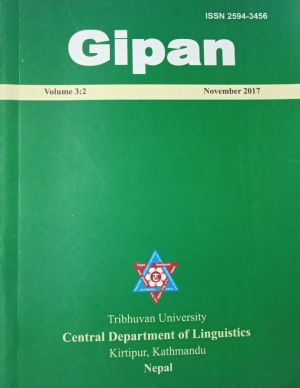The Semantics of the Ergative in Nepali
DOI:
https://doi.org/10.3126/gipan.v3i2.48900Keywords:
Ergative, aspectual split, arguments, semantic notions, predicationsAbstract
The semantics of the ergative in Nepali, a modern Indo-Aryan language spoken in Nepal, Bhutan and in some states of India, differs from other New Indo-Aryan languages of the region. In the Western and Central New Indo-Aryan languages (e.g., Hindi-Urdu, Panjabi, etc.), aspectual split determines the ergative system (Beames 1872-79, Kellogg 1893, Hook 1992, Dixon 1994, Peterson 1998, Bynon 2005, Butt 2006). In these languages such as Hindi-Urdu, the (agentive) subject in the perfective transitive clauses gets ergative marking and the verb agrees with the object. However, Nepali defies these prevalent trends of ergative marking of New Indo-Aryan languages. In several contexts, the Nepali ergative is typologically unexpected, for example, arguments of participialized clauses or nominalizations. Unlike its sister languages, in some contexts, the subjects of transitive clauses in non-past tenses get ergative marking whereas, in some other contexts, they are marked with nominative case. This split ergative system in non-past tenses can be explained in terms of semantic notions of individual-level and stage-level predications.
Downloads
Downloads
Published
How to Cite
Issue
Section
License
This license enables reusers to distribute, remix, adapt, and build upon the material in any medium or format for noncommercial purposes only, and only so long as attribution is given to the creator.

